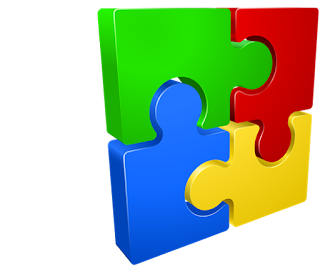Have you ever had math anxiety? If so, you’re not alone. Many people claim to suffer from math anxiety
– and expressing it can actually affect their kids.
Parents’ beliefs are contagious
Studies have shown that parents who express
anxiety while helping their children with math reduce their children’s
performance in first and second grades.
When mothers informed their daughters that they were not good at math,
the daughters’ work in the subject declined.
It’s not just the parents
Female teachers’ math anxiety has
been shown to negatively affects girls’ math achievement. In one study, the more anxious the female
elementary school teachers were, the more likely the girls in their classes
became infected with the stereotype that girls were not good at math – and the
girls’ math performance was impacted in a measurable way. The
boys in their classes were unaffected.
Why is math anxiety a problem?
Math anxiety affects math performance. Math anxiety can have a disruptive effect on
working memory, which is needed to attack math problems. When a child is preoccupied with fearful and
apprehensive thoughts, their brain is not fully focused on the challenging task
at hand, putting them at a distinct disadvantage that affects their learning. This is particularly common when children are
given timed tests.
Higher level math will be a lot more
important to the next generation. American
students, at a minimum, generally have to take 10 years of math classes to
achieve a high school diploma – the least amount of education needed to get
even an unskilled job in today’s job market.
Lack of confidence in math leads students to avoid certain careers
because completion of high level math is needed for entry. This doesn’t only apply to the obvious scientific
occupations, many college business programs actually require two semesters of
calculus.
As time goes on, STEM careers will
become a much larger part of the economy.
The working world will be transformed in radical ways in short periods
of time. For example, driverless cars could
make taxi drivers and truck drivers obsolete within ten years. Uber and similar companies are already making
full time taxi driving a thing of the past.
Today’s kids will need a solid foundation in the STEM subjects to
prepare them for a job market we can’t even imagine today.
So how can parents help their
children learn math more easily?
If you struggled with math or have
had anxiety, refrain from expressing it to your child. Talk positively about how math (even simple
computations) help you in your daily life today. Praise all efforts and perseverance with
their homework, even when they don’t arrive at the right answer at times. If you’re a mother who has a daughter, let
her know you are confident in her ability to achieve in math.
Parents can foster positive attitudes
about math by stressing that math is a just a subject learned by practice and persistence. There is no such thing as a “math person” and
anyone can learn math. Making mistakes
is just a healthy part of that process – not proof of any lack of ability or
intelligence. In fact, making mistakes
in math has been shown on MRI scans to make a person’s brain grow. There is no race or gender that has any
special advantage when doing math, those stereotypes are totally wrong.
Parents can help their kids learn
math by encouraging them to play math enrichment games and do puzzles to
develop number sense. Visuals like board
games are especially helpful for developing a child’s understanding of math
concepts. Spatial skills - the comprehension and recall of the spatial
relations between objects - are closely related to math skills. Studies have shown that kids benefitted
immediately after playing a number line game similar to Snakes and Ladders and
a visual model of the positive and negative number line helped kids intuitively
understand how negative numbers work.
The more kids play games and have fun with numbers, the less math
anxiety and the more confidence they will have exploring math.
Click here to see: 9 Great PictureBooks to Help Your Kid Learn Math
Click here to see: 6 Simple Ways toImprove Your Child’s Math & Spatial Skills

























